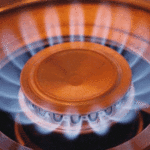Natural gas rose for a fifth session in six as weather forecasts continued to call for much lower-than-usual temperatures across the northern and eastern US that would induce significantly stronger heating demand.
Natural gas for delivery in March traded 1.18% higher at $2.837 per million British thermal units at 9:46 GMT, having shifted in a daily range of $2.867-$2.786. The contract rose 3.35% on Friday to settle the week 8.6% higher at $2.804, snapping three straight weekly losses.
The eastern and northern US remain in the grip of very cold weather as temperatures hover near 15-30 degrees Fahrenheit below usual, NatGasWeather.com said in a Monday report. Heating demand will be very high as overnight lows plunge into the single digits and below zero across the Midwest and Northeast, while the Southeast sees lows in the 20s and slightly lower.
A new reinforcing cold blast will follow up on Tuesday, pushing deep into the southeastern US and establishing below-freezing temperatures throughout the week. Texas and the Southern Plains will also turn cooler, but the truly threatening frigid air will be confined to the North and East. Meanwhile, the West will remain dominated by warmer-than-average temperatures reaching into the 70s and lower 80s.
A brief break from cold conditions over the East will come this weekend but another weather system will tap cold Canadian air on Sunday into the northern US, NatGasWeather.com said. However, although it will bring another round of strong heating demand, the system will likely be weaker than the ones currently playing out.
Next week, cold blasts will continue to keep temperatures across the eastern and central US below the average, especially over the Great Lakes, Northeast and Mid-Atlantic, while the West remains warm. Data remain unclear on how March will start, with the probability of additional cold blasts to impact the Midwest and Northeast, but there is also the chance of the Canadian cold air to retreat across the border, curbing heating demand.
Temperatures
According to AccuWeather.com, readings in New York on February 18th will range between 12 and 29 degrees Fahrenheit, compared to the average 29-42, and will bottom at 9-11 degrees the following two days. Highs will firmly establish above the freezing point after February 22nd and will reach seasonal levels five days later. Chicago will see temperatures bottom at between -3 and -5 degrees on February 18-19th, well below the seasonal 22, and highs will fail to find stable ground above the freezing point through the end of the month.
Down South, Houston will range between 41 and 62 degrees on February 18th, compared to the average 49-66, and will experience seasonal and slightly lower readings through the first week of March. On the West Coast, temperatures in Los Angeles will max out in the mid and high 70s through February 26th, compared to the average 69 degrees, before dropping slightly below seasonal for a brief period.
Inventories
The Energy Information Administration reported on Thursday that US natural gas stockpiles fell by 160 billion cubic feet in the week ended February 6th, beneath analysts’ expectations for a decline in the range of 165-175 bcf. Total gas held in US storage hubs amounted to 2.268 trillion cubic feet, narrowing the deficit to the five-year average of 2.279 trillion to 0.5% from 1.2% a week earlier. The surplus to the year-ago storage of 1.726 trillion cubic feet expanded to 31.4% from 23.9% during the preceding period.
This weeks report is expected to reflect a much thinner inventory decline as the tracked periods warmer-than-usual conditions across the central, southern and western US are factored in, most likely turning deficits into surpluses. The five-year average decline for the week ended February 13th is 180 billion cubic feet, while inventories slid by 247 bcf during the comparable period a year earlier.
However, as cold weather began to spread its reach outside the Midwest and Northeast last weekend and this week, the following inventory report, due on February 26th, will likely show a much larger inventory withdrawal, keeping supplies near the average.
Pivot points
According to Binary Tribune’s daily analysis, March natural gas futures’ central pivot point stands at $2.757. In case the contract penetrates the first resistance level at $2.858 per million British thermal units, it will encounter next resistance at $2.912. If breached, upside movement may attempt to advance to $3.013 per mBtu.
If the energy source drops below its first support level at $2.703 per mBtu, it will next see support at $2.602. If the second key support zone is breached, the power-station fuel’s downward movement may extend to $2.548 per mBtu.
In weekly terms, the central pivot point is at $2.753. The three key resistance levels are as follows: R1 – $2.934, R2 – $3.065, R3 – $3.246. The three key support levels are: S1 – $2.622, S2 – $2.441, S3 – $2.310.





